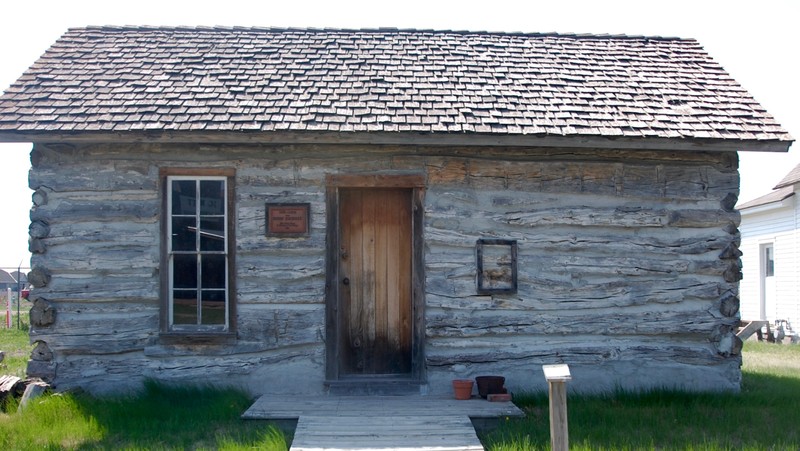Eggers Cabin 1860s/ Post South Loup Fort/ Fort Banishment at the Trails and Rails Museum
Introduction
Text-to-speech Audio
Images
The Cabin as it stands at the Museum today.

The Cabin as it stands at the Museum today.

Backstory and Context
Text-to-speech Audio
There were several smaller forts that surrounded Fort Kearny such as the Post South Loup Fort. These smaller forts provided some additional protection to Fort Kearny, as well as the peaceful Pawnee tribes nearby, from Cheyenne and Sioux tribes during the Indian Wars. The Post South Loup Fort was known by many names, including Post Connor, Fort Desolation and Fort Banishment. Established in May of 1865, this fort was in use for just one summer before it was abandoned. The fort was located outside of the present day town of Ravenna, Nebraska, along Highway 2. Although it is unconfirmed whether the building at the Trails and Rails Museum was a part of the Post South Loup Fort, similar buildings would have been used at the fort.
Although the exact date this cabin was built is unknown, it is likely to have been built prior to the Union Pacific Railroad laying down the rails for the Transcontinental Railroad as they used many of the large trees in the area for the railroad ties under the tracks, leaving few trees for anyone else to use in building structures. Many buildings at the time were made out of sod due to the lack of trees on the prairie.Sources
Howell, Alice S. “Post South Loup Fork,” Buffalo Tales, Vol. 14, No. 6. July/August 1991.Kearney: Buffalo County Historical Society, September/October 2014.
“Post South Loup Fork ‘Fort Banishment,’” Nebraska State Historical Society, June 4, 2004.
